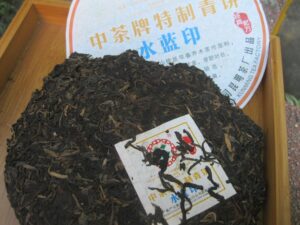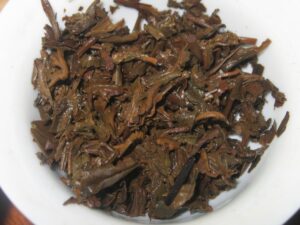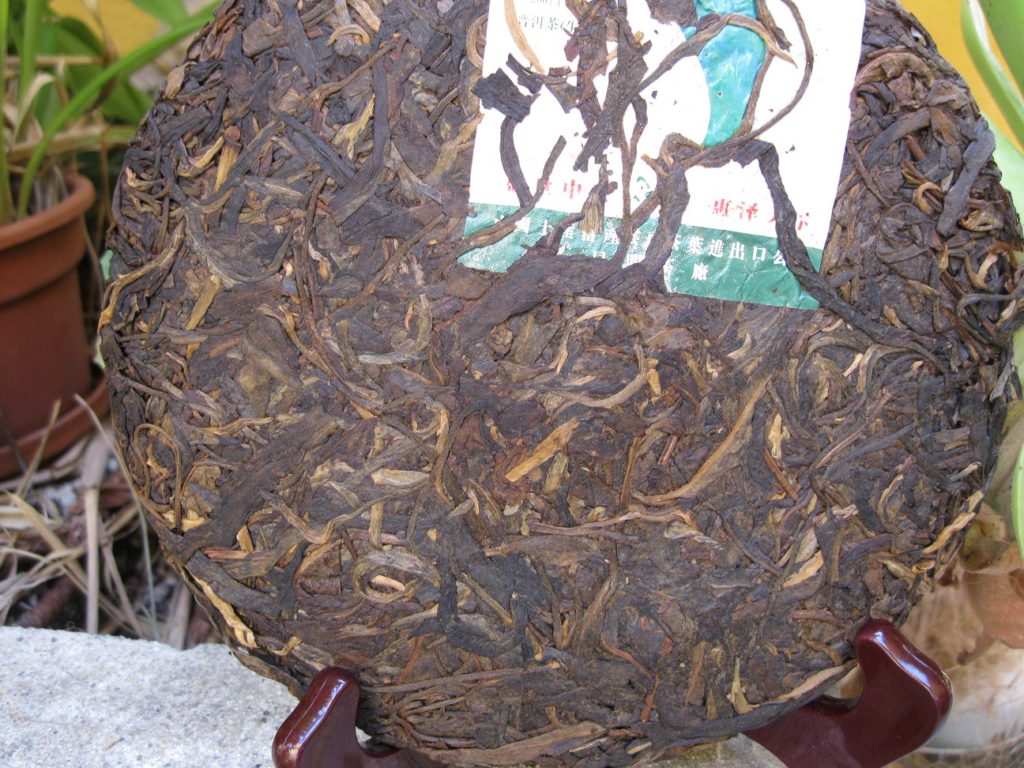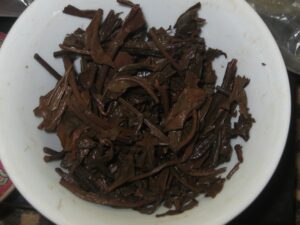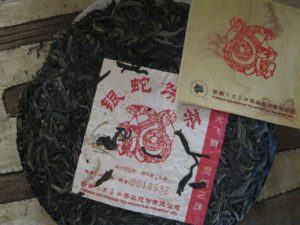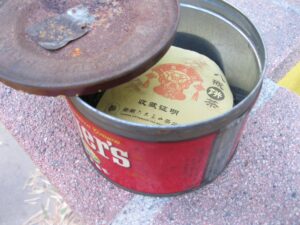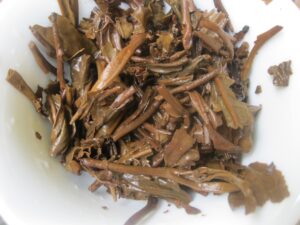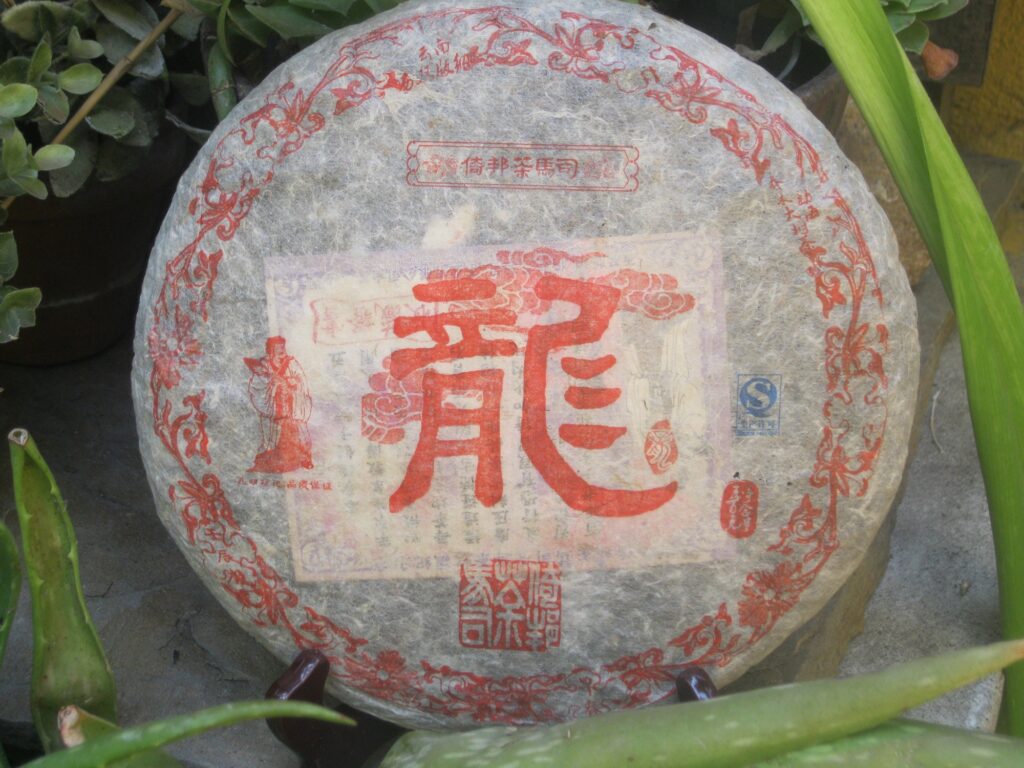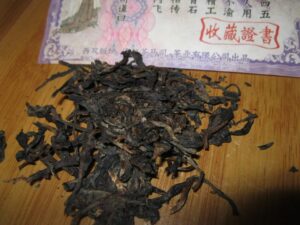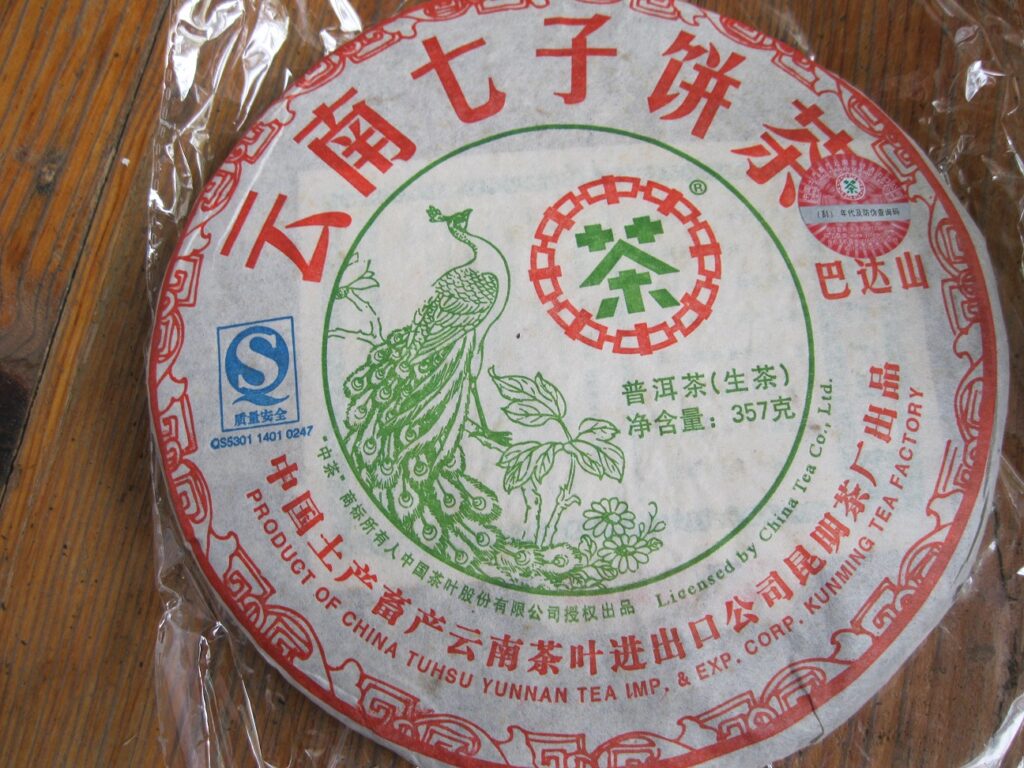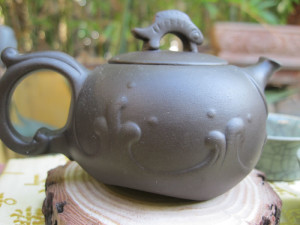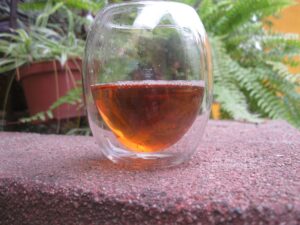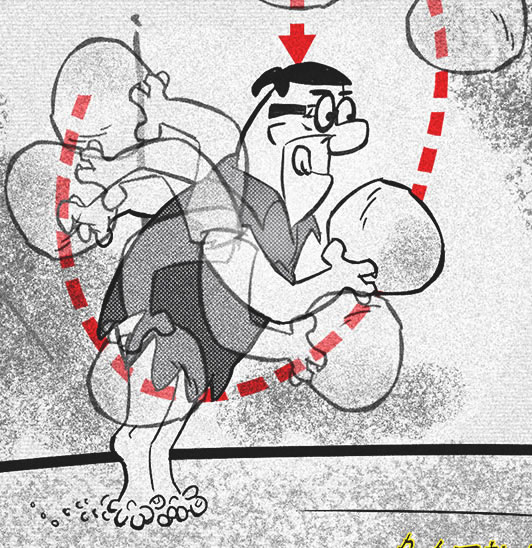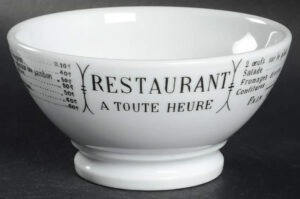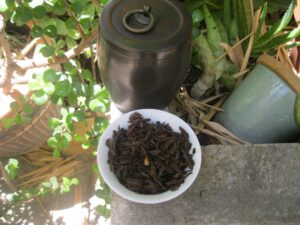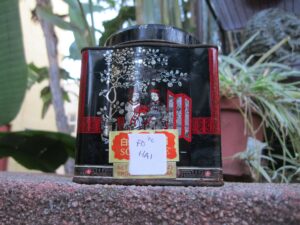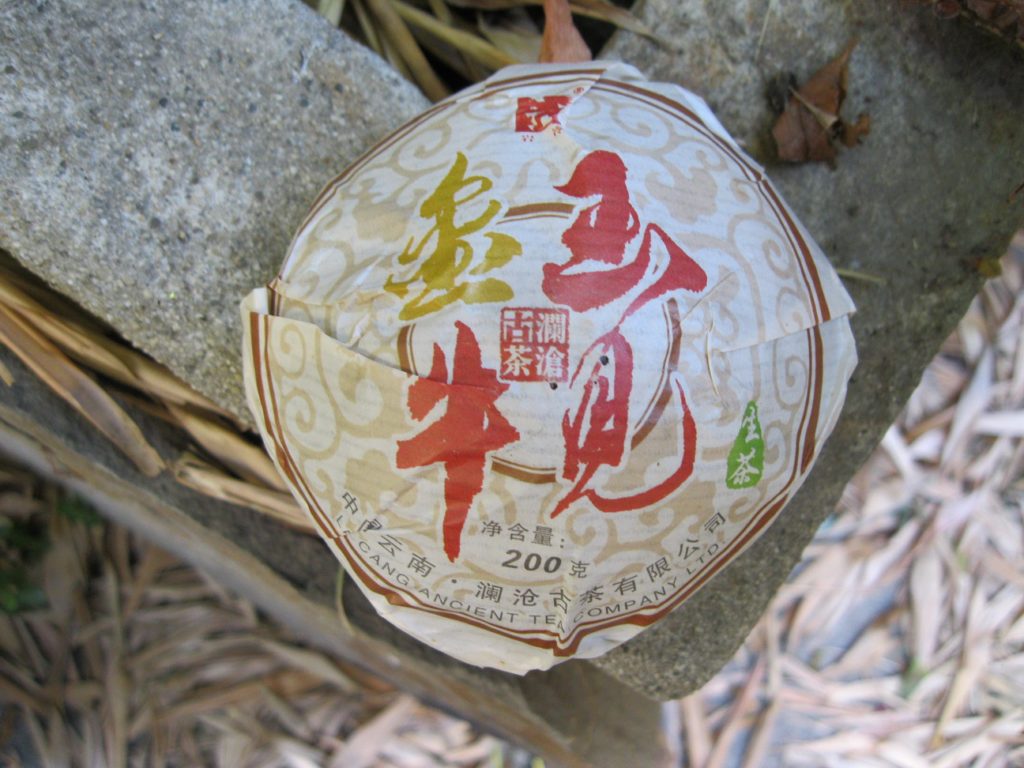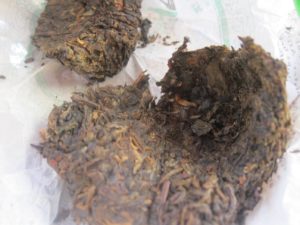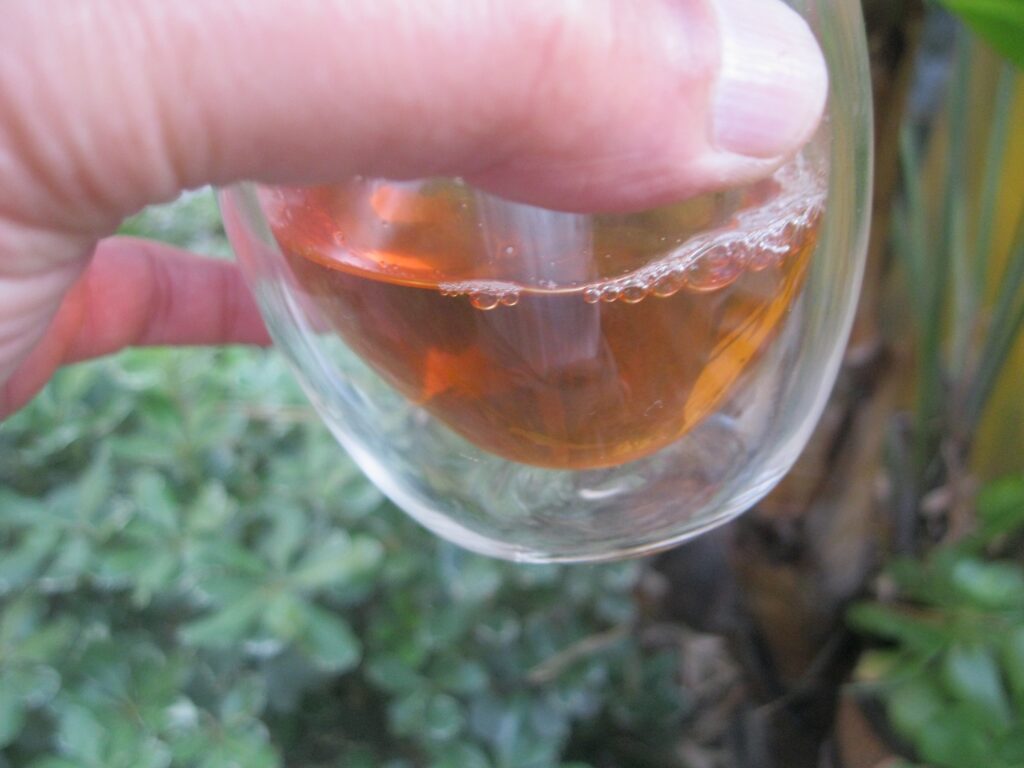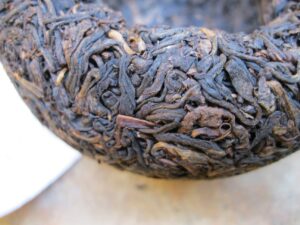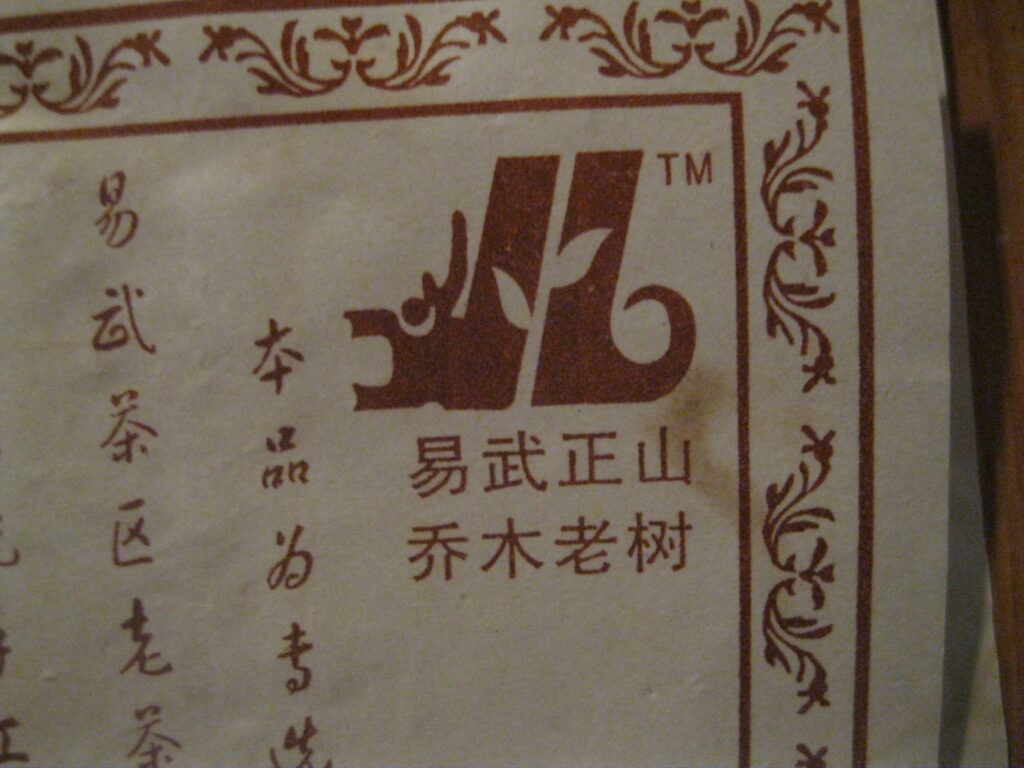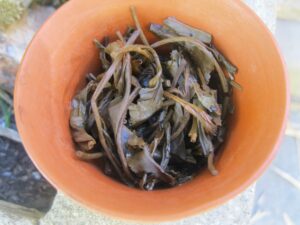Puerh Report: Tin Water Blues
Puerh Report: Tin Water Blues is part of an on-going look at the development of various tinned puerhs. Here “tinned” is broadly construed to include raw puerhs stored in clay and porcelain as well. Tin Water Blues is the Water Blue Mark stored about six weeks in a big fancy porcelain vessel with a tight-fitting porcelain lid having a foil underside.
I tested the Water Blue Mark as many as three times in that period, with a stint where the lid was left ajar. It didn’t gain anything from porcelain. A case for the blues if I’ve ever heard one. It seemed to get airier when what it needs is to continue to cook through some of the smoke while letting the more complex spices and fruits develop.
I moved it to a kraft bag seal pouch, which I use for posting larger samples. I’ve had some success with these storing a few items. I consider their storage different from clay and perhaps porcelain in that it is sealing in flavor as opposed to seasoning it with a great deal more air exchange through clay. Porcelain may not do this and might be best for stuff you want to keep as fresh as possible. Porcelain aside, this vessel is so impossibly large that it might be best for sancha.
One must consider the change in season and variances in brewing vessels and brewing amounts. The Puerh Junky using a scale much less lately with raws. A scale still finds use with ripes more interested in testing performance relative others in the collection. With raws I’m paying more attention to compression and eye-balling.
The most recent eye-balled session with the WBM stored in the kraft bag for around 10 days is a success. Altogether eight infusions were had on day one. At the eighth, which got a minute, an interesting thing happened. . . it got sweeter, while the smoke toned down. Rocks and sugar. Infusions the following morning were both sweet and savory. The production has taken on a more serious tone, savory along with petrol, in the vein of the 6FTM Tuo and other considerably pricier items. By the 12th infusion it got boring, but the shift at eight bodes well for what WBM is becoming.
I guess not all blues has a sad ending. I’m at a stage now where I’m much more willing to make quick calls in my six-ring circus of storage. It’s largely a matter of fine tuning given the variations I have at my disposal and what the tea prefers. Volume and density is a major axis along which storage hinges. Right now WBM is in a density phase. We want more depth and richness to cook the fruit and spices not air them.


